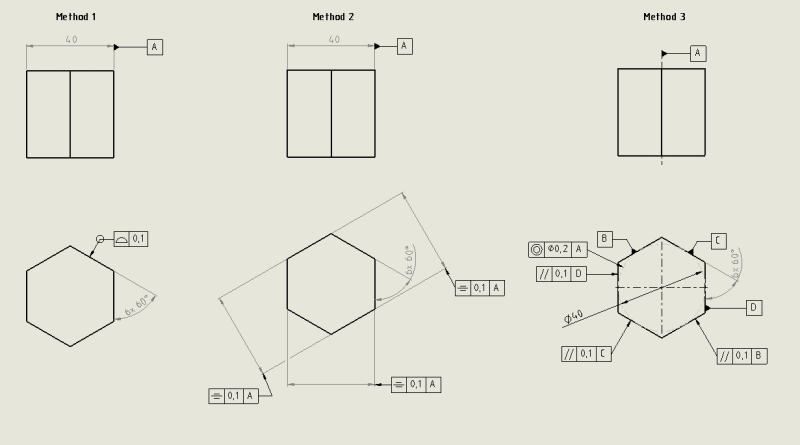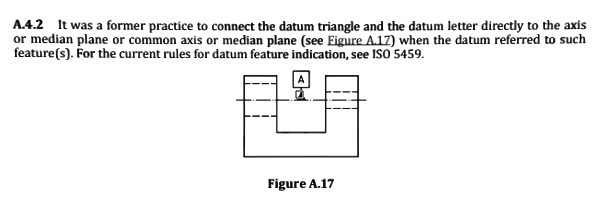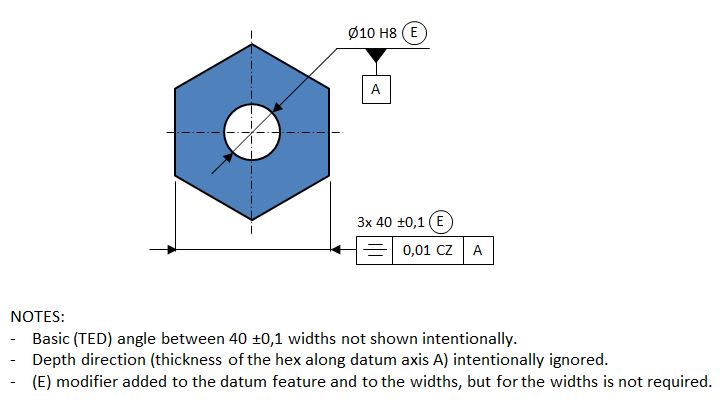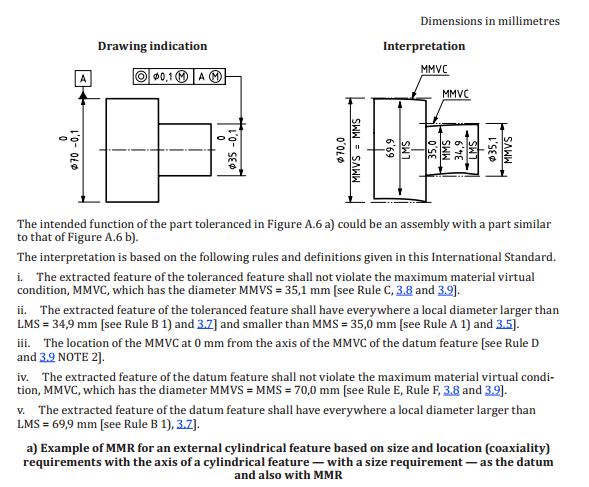Sem_D220 said:
Those "extracted" median lines and median planes must be derived differently than ASME median lines and median planes. Per ASME, the UAME of the feature is involved in the definition of these elements (center points are sampled at cross sections perpendicular to the axis / center plane of the AME...) I suppose that this is the main difference between ASME and ISO Symmetry - the method by which the controlled median plane is derived. Is that right?
Yes, that is right. In ISO, LSQ (least sum of squares) features, and not minimum circumsribed or maximum inscribed features, are involved in the definition of the extracted median plane and line.
chez311 said:
pmarc - are these similar analogs or identical?
The modifiers I mentioned basically change an element controlled with a geometric tolerance, like position, symmetry or coaxiality.
For example, circle X modifier used in a position tolerance frame applied to a hole changes default controlled element from imperfect extracted median line to a perfect axis of the maximum possible cylinder expanded within the hole. So it defines the same requirement as position callout in ASME.
Circle N modifier used in a position tolerance frame applied to a pin changes default controlled element from imperfect extracted median line to a perfect axis of the minimum possible cylinder contracted about the pin. So again, it defines the same requirement as position in ASME.
greenimi said:
I just hope pmarc will come back and clarify if I am on a right track (profile all around differences) or he was talking about something else.
Your attachment refers to an outdated ISO standard for profile tolerancing. This is what I meant:
First, I hope it's clear. Second, I hope that even without trying to understand the content of the document, it sufficiently shows how different both systems are. And third, I hope that those who believed otherwise will at least consider changing their mind.
EDIT: Link edited - the document attached originally contained too many pages.






![[bow] [bow] [bow]](/data/assets/smilies/bow.gif) )
)